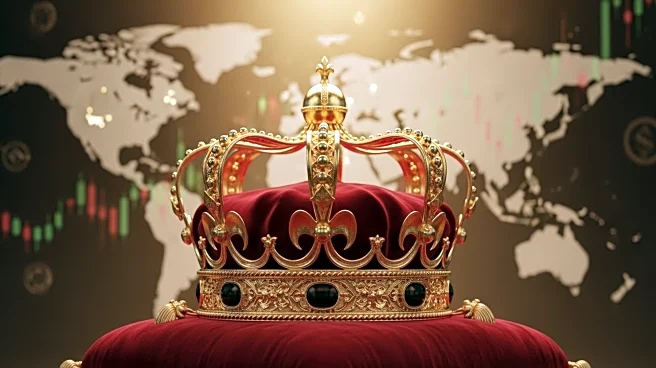What's Happening?
Gold prices have reached a record high of over $4,200 per ounce, driven by ongoing market volatility and investor uncertainty. The surge in gold prices is attributed to macroeconomic and geopolitical factors,
alongside expectations of further interest rate cuts by the U.S. Federal Reserve. Central banks, particularly in China, are also contributing to the rise by purchasing gold at a rapid pace. The price of gold has increased nearly 60% this year, hitting record highs on multiple occasions as investors seek a safe haven amid economic instability.
Why It's Important?
The rise in gold prices reflects broader economic uncertainties and investor behavior during volatile market conditions. As a traditional hedge against inflation and uncertainty, gold's increasing value indicates a shift in capital from equities to safer assets. This trend could impact various sectors, including financial markets and commodities, as investors adjust their portfolios in response to economic signals. The potential for gold prices to reach $5,000 per ounce by year-end underscores the significant role of precious metals in current investment strategies.
What's Next?
If the current pace of gold buying continues, analysts predict further increases in gold prices, potentially reaching $5,000 per ounce by early 2026. This could lead to increased interest in gold-related investments, such as exchange-traded funds (ETFs) and mining stocks. Additionally, ongoing geopolitical tensions and economic policies, including interest rate decisions by the Federal Reserve, will likely influence gold's trajectory and investor sentiment.
Beyond the Headlines
The trend towards de-dollarization and increased central bank purchases of gold highlight a shift in global economic strategies. This movement away from reliance on the U.S. dollar could have long-term implications for international trade and currency markets, potentially altering the balance of economic power.











